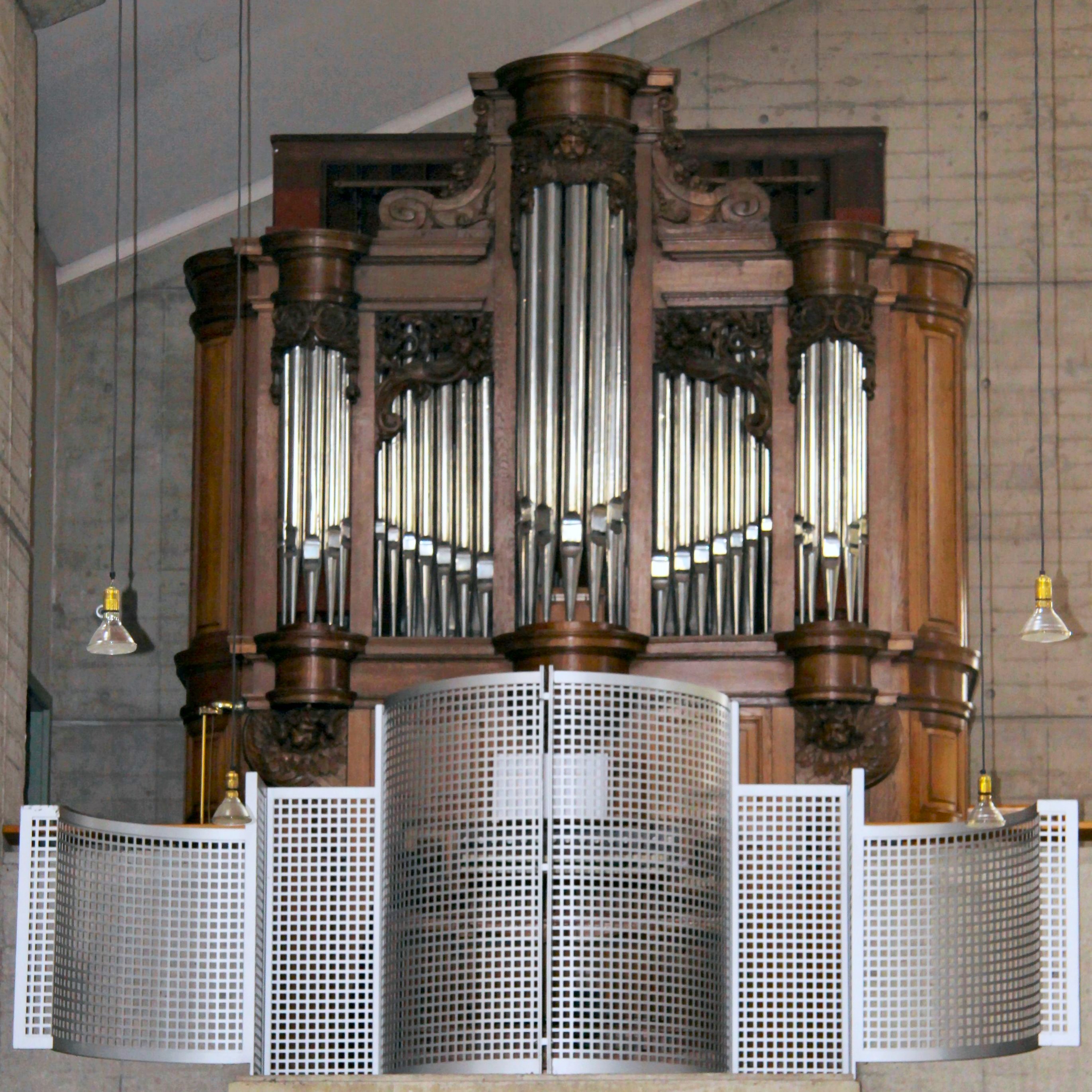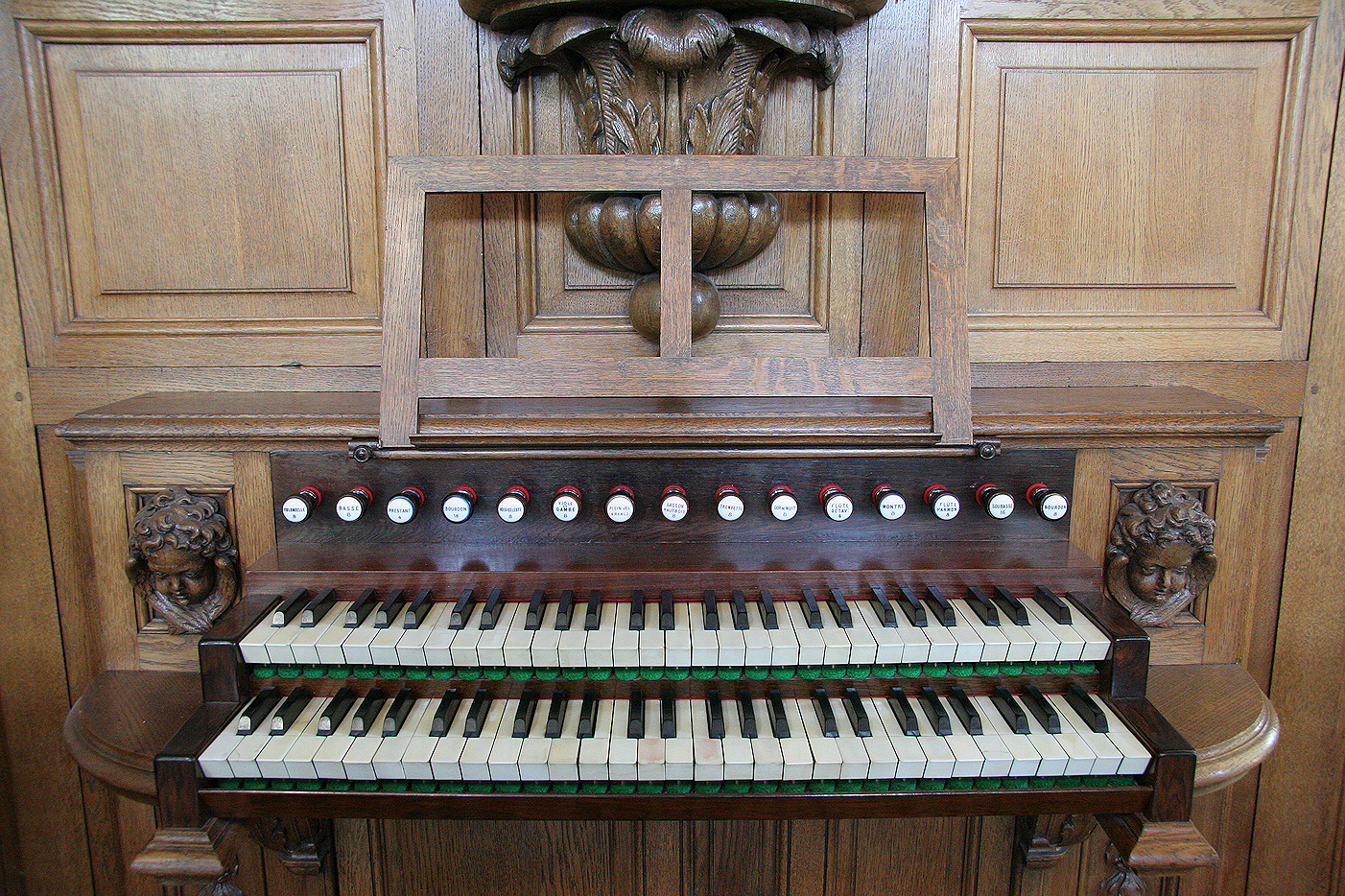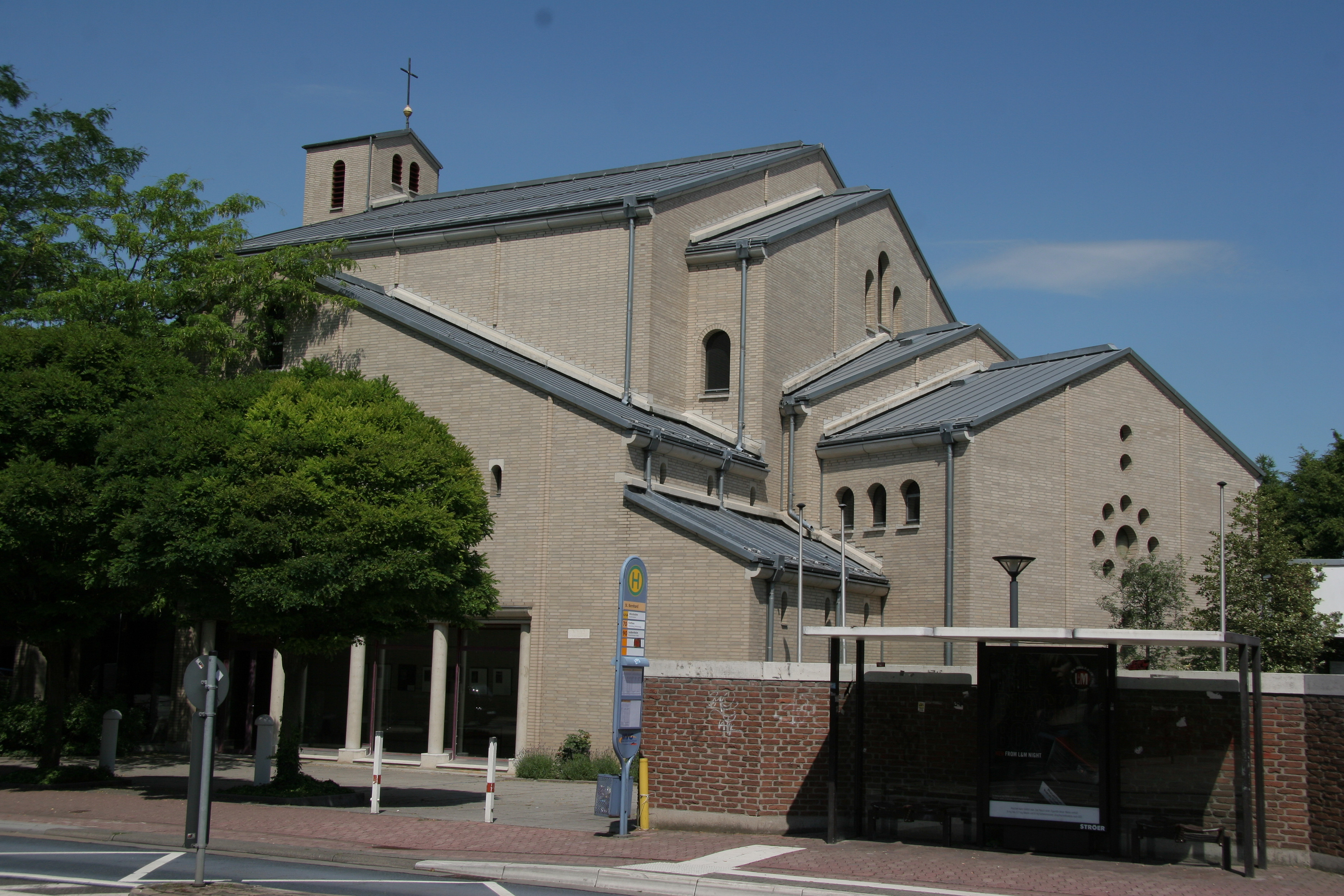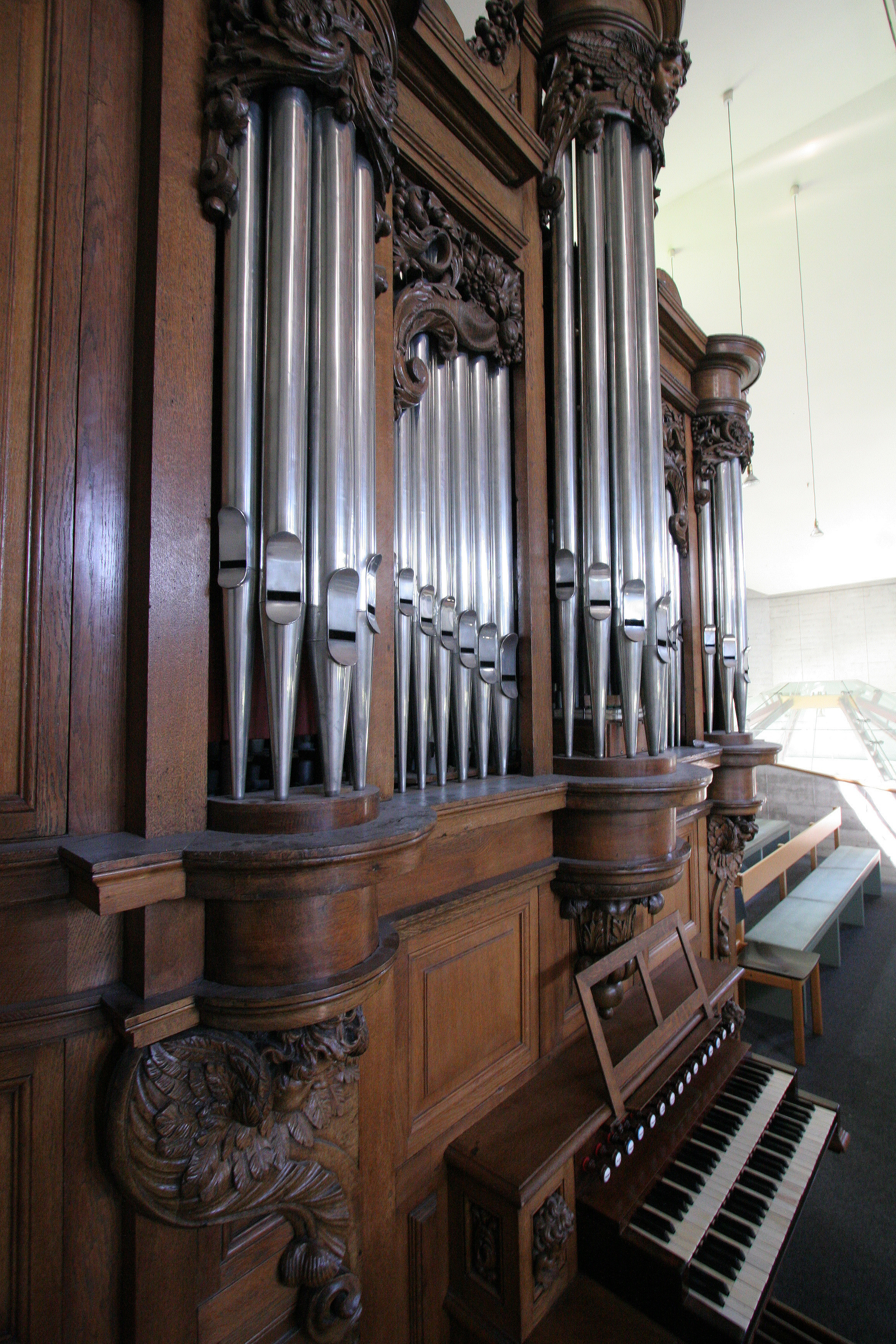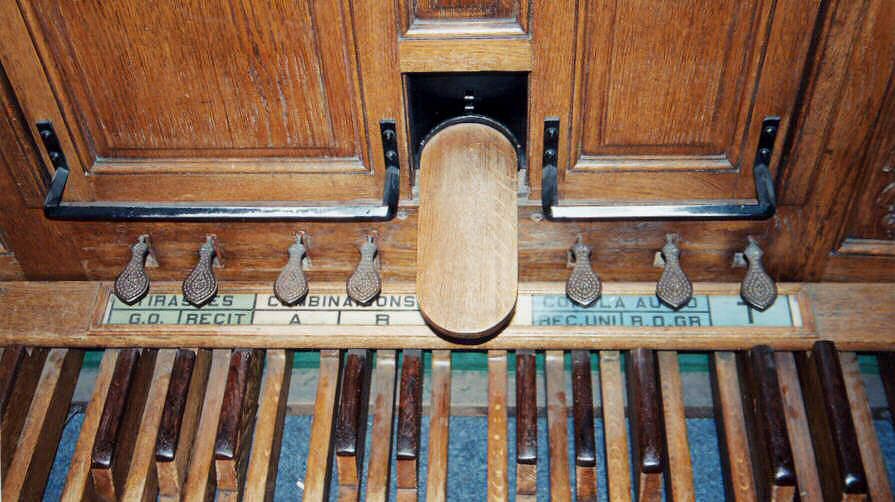Mainz, Sankt Bernhard
| Builder | A. Cavaille-Coll |
|---|---|
| Year | 1877 |
| Period/Style | Romantic |
| Stops | 15 |
| Keyboards | 2+P |
| Keyaction | tracker/mechanical |
| Tuning | Equal at 440 Hz |
| Sampleset |
Available
 , sampled by
OrganArt Media
, sampled by
OrganArt Media
|
The organ crafted by Aristide Cavaillé-Coll in 1877, located in the Catholic parish of St. Bernhard in Mainz-Bretzenheim, Rheinland-Pfalz, Germany, stands as a testament to the profound influence and exceptional craftsmanship of the renowned French organ builder. Cavaillé-Coll, celebrated for creating the symphonic organ, significantly impacted organ design with innovations like the Flûte harmonique, swell boxes, Spanish horizontal trumpets, and German string stops. His organs are distinguished by their orchestral timbre, seamless tonal fusion, and resonant richness, which provided the sonic foundation for the symphonic style of composition that characterized French organ music in the latter half of the 19th century. This particular organ at St. Bernhard, the only original Cavaillé-Coll organ in Germany, embodies these qualities and serves as an enduring piece of musical heritage.
The organ's journey from its original home in a church near Place de l'Etoile in Paris to its current location is marked by several relocations and a meticulous restoration process. Initially intended for another parish and later used by Cavaillé-Coll as a demonstration and experimental model, the organ incorporates elements from previous instruments, including a historical case over 250 years old. After a series of ownerships within the same family and a stint in the Oratoire de Louvre, the instrument was generously provided to a Lutheran community in Suresnes by the family's descendant, who later facilitated its transfer to Germany. The comprehensive restoration was carried out by Claude Berger and Jean-Pierre Swiderski, ensuring the preservation of Cavaillé-Coll’s original sound and craftsmanship. The organ was inaugurated in December 1999 at St. Bernhard by Daniel Roth, further marking its historical and cultural significance as it continues to resonate within the sacred space, enriching liturgical and musical practices.
The organ's journey from its original home in a church near Place de l'Etoile in Paris to its current location is marked by several relocations and a meticulous restoration process. Initially intended for another parish and later used by Cavaillé-Coll as a demonstration and experimental model, the organ incorporates elements from previous instruments, including a historical case over 250 years old. After a series of ownerships within the same family and a stint in the Oratoire de Louvre, the instrument was generously provided to a Lutheran community in Suresnes by the family's descendant, who later facilitated its transfer to Germany. The comprehensive restoration was carried out by Claude Berger and Jean-Pierre Swiderski, ensuring the preservation of Cavaillé-Coll’s original sound and craftsmanship. The organ was inaugurated in December 1999 at St. Bernhard by Daniel Roth, further marking its historical and cultural significance as it continues to resonate within the sacred space, enriching liturgical and musical practices.
| Grand Orgue | Récit expressive | Pédalier |
|---|---|---|
| Bourdon 16 | Viole de Gambe 8 | Soubasse 16 |
| Montre 8 | Cor de nuit 8 | Bourdon 8 |
| Flûte harmonique 8 | Voix céleste 8 | Basse 8 |
| Prestant 4 | Flûte octaviante 4 | Violoncelle 8 |
| Plein jeu 4 rangs | ||
| Trompette harmonique 8 | ||
| Basson hautbois 8 |
Franck Choral I 1st part
0:00
0:00
https://www.organartmedia.com/de/a-cavaille-coll
https://www.musik.uni-mainz.de/wettbewerbsorgeln/
https://www.musik.uni-mainz.de/wettbewerbsorgeln/
 Pipe Organ Map
Pipe Organ Map